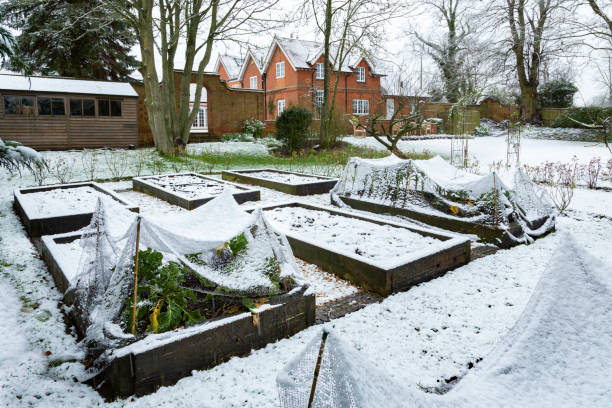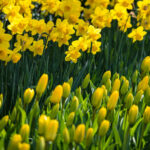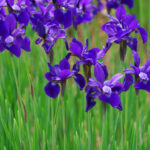As the warm days of summer fade into the crispness of fall, it’s time to prepare your garden for the coming winter. Preparing your garden for winter is essential for protecting your plants, soil, and garden structures from the harshness of cold temperatures, frost, and snow. Proper winter preparation ensures that your garden not only survives the cold months but also thrives when spring arrives.
Here, we will guide you through the essential steps to winterizing your garden, including plant care, soil maintenance, garden structure protection, and strategies for making the most of the dormant winter months.


1. Preparing Plants for Winter
Plants, particularly perennials, shrubs, and trees, need special attention as winter approaches. The key is to protect the roots and prevent damage caused by frost, ice, and fluctuating temperatures.
a. Pruning and Trimming
Pruning is an essential part of preparing your garden for winter. However, not all plants should be pruned before the winter months, so it’s important to understand the needs of your specific plants.
- Deciduous Trees and Shrubs: Late fall is a good time to prune dead or damaged branches from deciduous trees and shrubs. However, avoid heavy pruning as it can stimulate new growth, which is more vulnerable to frost damage.
- Perennials: Cut back dead foliage on perennials after the first frost. Some gardeners choose to leave the dried stalks in place to provide shelter for beneficial insects, but cutting them back reduces the risk of diseases and pests overwintering in the garden.
- Roses and Hydrangeas: Prune roses lightly to prevent wind damage during winter storms, but save heavy pruning for early spring. Hydrangeas should be pruned based on their variety—some bloom on old wood, while others bloom on new growth, so pruning needs to be carefully timed.
b. Mulching and Insulating Plants
Mulching is one of the most important steps in preparing your garden for winter. Mulch acts as an insulating layer, protecting plant roots from freezing temperatures and minimizing soil erosion.
- Apply Mulch: Spread a 2-4 inch layer of mulch (such as straw, bark chips, or shredded leaves) around the base of perennials, shrubs, and trees. Mulch helps retain soil moisture and prevents soil from freezing and thawing, which can heave plants out of the ground.
- Protecting Tender Plants: For more delicate plants, such as tender perennials or young shrubs, consider additional protection like covering them with frost cloths or burlap. You can also create a “plant blanket” by adding an extra thick layer of mulch around the root zone.
c. Bringing Potted Plants Indoors
Many potted plants are more sensitive to cold weather than those planted in the ground. Before the first frost, bring any tender or tropical plants indoors.
- Inspect for Pests: Before moving plants indoors, inspect them carefully for pests or diseases to prevent contaminating your indoor plants.
- Transitioning Plants: Acclimate your plants by bringing them indoors gradually over a few days to avoid shock from the sudden change in temperature and light levels.
d. Planting Fall Bulbs
One of the joys of preparing your garden for winter is planting spring-blooming bulbs, such as tulips, daffodils, crocuses, and hyacinths. These bulbs need the cold dormancy of winter to bloom beautifully in the spring.
- Timing: Plant bulbs in the fall, usually six to eight weeks before the ground freezes.
- Depth: Follow specific planting depth instructions for each type of bulb (generally, bulbs should be planted at a depth of three times their height).
- Mulching Bulbs: After planting, cover the bulbs with mulch to help regulate soil temperature and protect them from being uprooted by frost heave or animals.
2. Preparing the Soil for Winter
Your garden soil is the foundation of a healthy garden, and preparing it for winter is critical to maintaining its health and fertility.
a. Remove Dead Plants and Weeds
Clear out any dead annual plants, weeds, and garden debris that could harbor pests or diseases during the winter. Compost healthy plant material, but discard any diseased plants to avoid spreading infections in the spring.
b. Amend the Soil
Fall is the perfect time to improve the quality of your soil by adding organic matter.
- Compost: Spread a layer of compost over your garden beds to improve soil structure and fertility. Compost will break down over the winter, enriching the soil and making nutrients available for spring planting.
- Manure: Well-rotted manure can also be added to the garden in the fall, giving it time to break down and enhance the soil’s nutrient levels by spring.
- Soil Testing: If you’re uncertain about your soil’s pH or nutrient content, fall is a good time to conduct a soil test. This will help you know what amendments are needed for optimal plant growth.
c. Cover Crops
Planting cover crops, also known as green manure, is an effective way to protect and improve your soil over the winter. Cover crops prevent soil erosion, suppress weeds, and add organic matter and nutrients when tilled into the soil in spring.
- Common Cover Crops: Popular cover crops include clover, rye, oats, and vetch. These crops are typically sown in late summer or early fall and left to grow until winter sets in.
- Benefits: Cover crops help prevent nutrient loss and keep the soil active during the winter, reducing the likelihood of compacted soil and improving soil texture.
3. Winterizing Garden Structures and Tools
Winter weather can take a toll on your garden structures and tools. Protecting these items ensures that they last longer and are ready for use when spring arrives.
a. Clean and Store Garden Tools
Properly cleaning and storing garden tools before winter is essential to prevent rust and damage.
- Clean Tools: Wash off any dirt, debris, and sap from garden tools. Use a wire brush or steel wool to remove any rust.
- Sharpen and Oil: Sharpen blades on pruners, shears, and other cutting tools, and coat metal surfaces with oil to prevent rust.
- Storage: Store tools in a dry, sheltered location, such as a shed or garage. Hanging tools or storing them off the ground can help prevent moisture damage.
b. Protecting Garden Structures
Your garden structures, such as fences, raised beds, trellises, and greenhouses, also need attention as winter approaches.
- Fences and Trellises: Check for any damage and repair weak or broken structures to prevent further wear from winter winds or snow. Wooden structures may need to be treated or sealed to protect against moisture damage.
- Greenhouses and Cold Frames: If you have a greenhouse or cold frame, ensure it is sealed properly to retain heat. Clean and disinfect the interior to reduce the risk of disease, and stock up on any winter gardening supplies, such as insulation or heating systems.
c. Drain and Protect Water Systems
Water left in hoses, irrigation systems, or fountains can freeze and cause damage. Be sure to drain and store garden hoses indoors and turn off any outdoor water supplies to prevent pipes from freezing.
- Irrigation Systems: Drain irrigation lines and cover or remove any sensitive components. If you have a sprinkler system, consider having it professionally blown out to remove any remaining water.
- Water Features: If you have a pond or fountain, drain it or ensure that it is properly winterized to prevent cracks caused by expanding ice.
4. Planning for Spring During the Winter Months
Winter is a time when much of your garden will go dormant, but it’s also an opportunity to plan for the future. While your garden rests, you can use this time to prepare for the growing season ahead.
a. Garden Planning
Take advantage of the quieter winter months to plan next year’s garden.
- Review Last Year’s Garden: Reflect on what worked well and what didn’t. Consider keeping a garden journal to note successes, challenges, and ideas for improvement.
- Order Seeds and Plants: Winter is a great time to order seeds, plants, and gardening supplies. Many garden centers offer discounts in the off-season, and ordering early ensures you get the varieties you want before they sell out.
b. Indoor Gardening
If you miss gardening during the winter, consider growing plants indoors. Herbs, leafy greens, and even some flowers can be grown indoors under the right conditions.
- Grow Lights: If natural light is limited, invest in grow lights to help your indoor plants thrive.
- Herb Gardens: Growing an indoor herb garden can provide fresh herbs for cooking throughout the winter.
Conclusion
Preparing your garden for winter is an essential task that ensures the long-term health of your plants, soil, and garden structures. By taking the time to winterize your garden, you can protect your investment and set the stage for a vibrant, healthy garden when spring arrives. From mulching and pruning to protecting garden tools and structures, these steps will help your garden withstand the challenges of winter and emerge stronger when the growing season begins anew.







